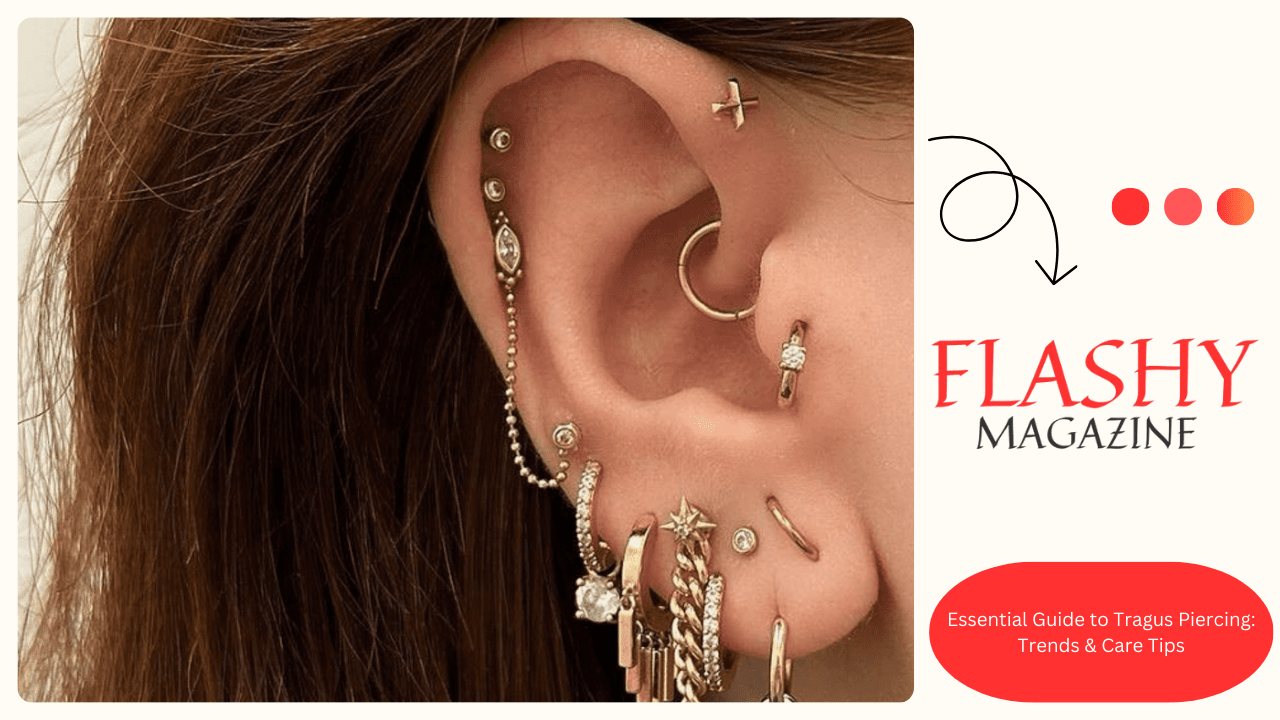Tragus piercings have come an decreasingly popular choice for those looking to add a unique and edgy faculty to their look. The tragus is located on a small piece of cartilage that protrudes above the observance conduit and is an ideal place for a piercing that sticks out without being too strong. Whether you are new to piercing or looking to expand your collection, this companion covers everything you need to know about tragus piercings- from the procedure to aftercare.
What’s a Tragus Piercing?
The tragus is a small, thick piece of cartilage that sits in front of the observance conduit. Unlike earlobe piercings, which go through soft towel, tragus piercings are placed over this harder cartilage, making them a bit more unique. While cartilage piercings tend to be stronger, they also have a sophisticated and minimalist look.
Tragus piercing is popular with numerous because of its delicacy. It’s not as conspicuous as a nose or lip piercing, but it still adds a touch of individuality to the observance. Whether you wear a super stud, a circle or commodity further creative, the tragus piercing is protean enough to suit any style.
How is a Tragus Piercing Performed?
Tragus piercing is performed by a professional piercer using a castrated needle. After completely drawing the area, the piercer will mark the spot on your tragus where the piercing will be placed. You’ll also be asked to confirm your position. Once you have given your concurrence, the piercer will fit a concave needle through the cartilage and also fit the jewel of your choice. does it hurt One of the most common questions about tragus piercings is,
Does it Hurt?
Pain forbearance varies from person to person, but utmost discomfort is minimum and short- lived. You may witness some throbbing or soreness for a many hours after your piercing, but this can generally be managed with an untoward pain reliever.
Choosing The Right Piece of Jewelry for a Tragus Piercing
One of the stylish effects about tragus piercings is the variety of jewelry available. When you first get pierced, your piercer will probably use a super stud made from a hypoallergenic material similar as surgical sword, titanium, or gold to minimize the threat of vexation. Once your piercing has healed, you can change it for different types of jewelry, including:
- Super studs: Simple and classic super studs are a popular choice for tragus piercings, especially when you’re getting your first treatment.
- Loops: Small loops or rings will give your tragus piercing a subtle and minimalist look.
- Barbells: Micro barbells can add a little faculty to your tragus piercing without being too inviting.
When choosing jewelry, it’s important to consider size and material. Since the tragus is a small area, you’ll want to choose jewelry that is not too large or heavy, which could beget discomfort or complications during mending.
How Long Does The Treatment Take?
The mending process of a tragus piercing generally takes 3 to 9 months, depending on how well you take care of it and your individual mending rate. It’s important to exercise proper aftercare to help infection or vexation.
During the mending period, you should avoid changing your jewelry too soon, as this can delay the mending process. Always follow your piercer’s advice on when it’s safe to change jewelry.
Tragus Piercing Aftercare
Proper aftercare is essential to insure your tragus piercing heals well and remains infection-free. Then are some crucial tips for minding for your new piercing:
-
Clean Twice a Day
Use saline to gently clean the tragus piercing twice a day. You can either buy apre-made saline result or make it at home by mixing 1/4 tablespoon of non-iodized ocean swab with 8 ounces of warm water. Soak a clean cotton ball or reek pad in the result and gently press it against the piercing for a many twinkles to keep the area clean.
-
Don’t Touch The Piercing
Try to avoid touching the piercing, especially with ignoble hands, as this can carry bacteria and lead to infection. Also, chorus from wringing or rotating the jewelry, as this can irritate the mending towel.
-
Be Careful With Your Hair and Headphones
Your hair and headphones can fluently get caught in the tragus piercing, which can be painful and slow mending. Be careful how you brush your hair, and consider using headphones or earplugs that do not press directly on the piercing as it heals.
-
Watch for Signs of Infection
While greensickness and lump are normal for the first many days, be on the lookout for signs of infection, similar as severe pain, a unheroic or green discharge, or fever. However, communicate your piercer or healthcare provider as soon as possible, If you suspect an infection.
Pitfalls and Considerations
Like all piercings, tragus piercings come with certain pitfalls. Infection is the most common complication, but can generally be avoided by following aftercare guidelines. also, because the tragus is made of cartilage, it’s further prone to swelling and vexation than an earlobe piercing.
Still, mending time or the possibility of keloids( raised scars), it’s a good idea to consult your piercer beforehand, If you’re concerned about pain. They can advise you grounded on your individual deconstruction and skin type.
Conclusion
Tragus piercing is a trendy and swish way to add commodity unique to your look. With proper care and attention, this piercing can be a beautiful and long- lasting addition to your jewelry collection. Be sure to consult with a professional piercer, follow proper aftercare procedures, and choose the right piece of jewelry that suits your style and comfort.








